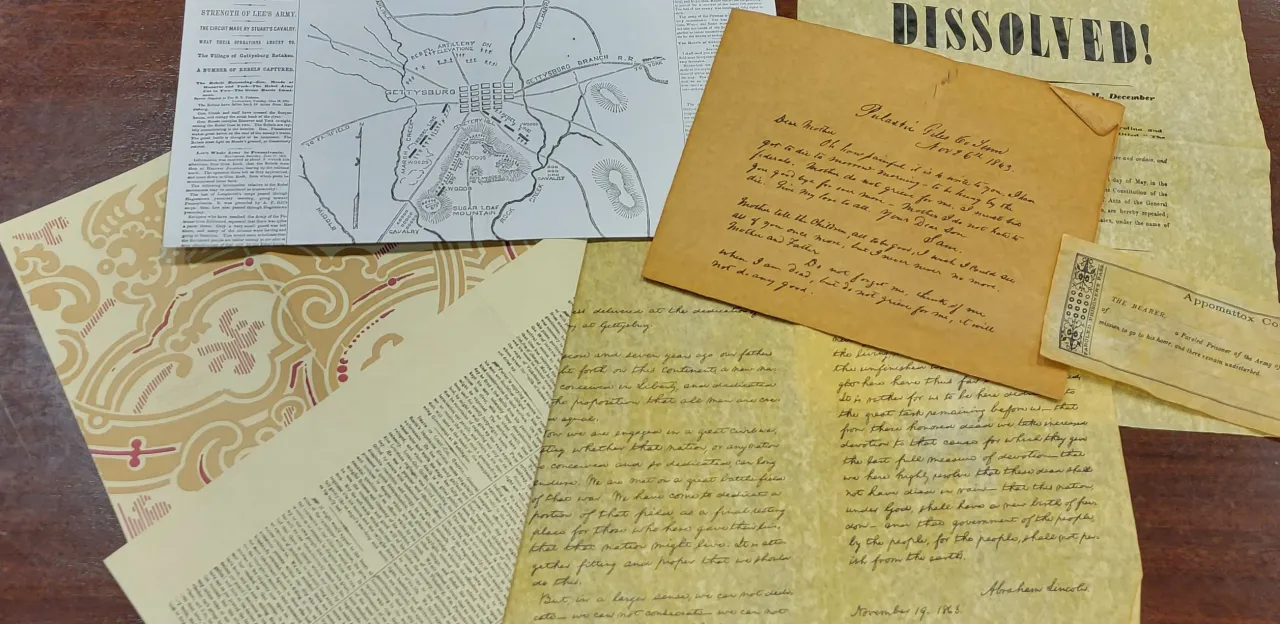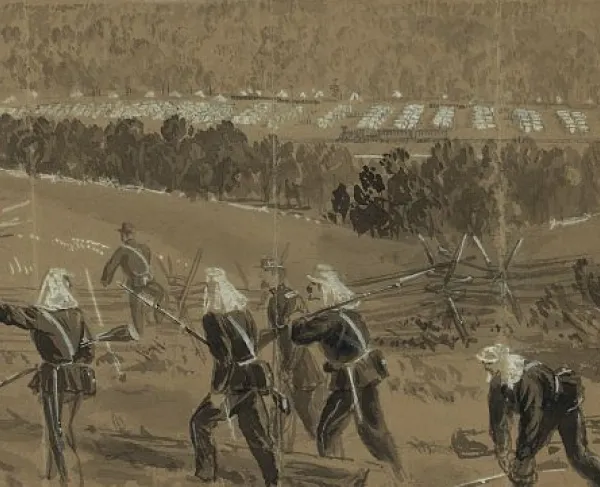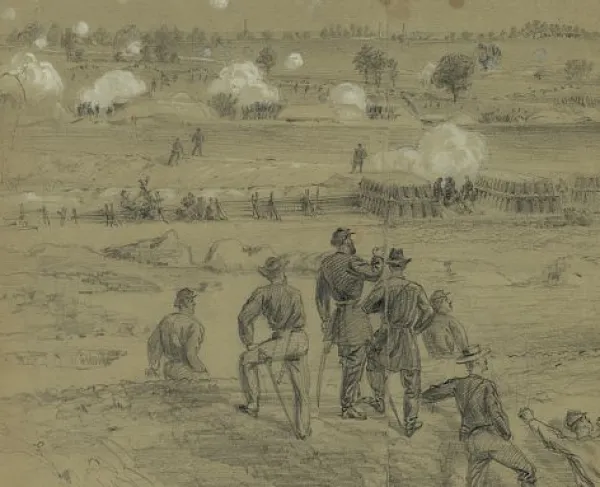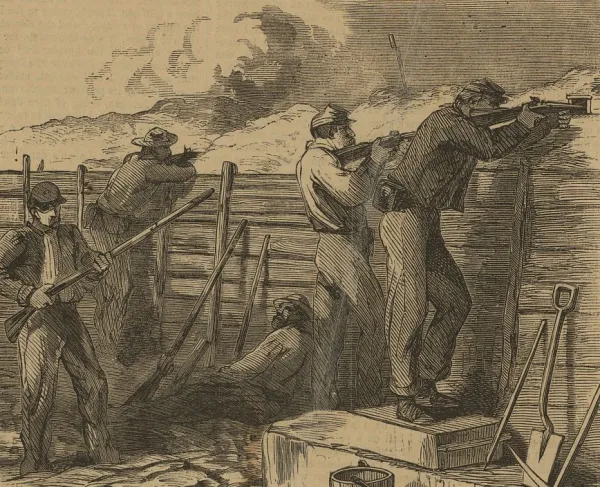6 Primary Sources from the American Civil War

Each of these documents examines an important moment or principle the events and experiences of the American Civil War. Starting with secession, highlighting turning point battles, examining one of the most famous speeches in U.S. History, featuring a soldier’s last letter, and including a paper that symbolized the end of the war for many soldiers, this packet provides an opportunity to look at Civil War history up-close.
Below, you’ll find everything you’ll need to customize a lesson or pick and choose what’s most helpful to your student’s interests and learning needs.
Common Core Standards and National Council for Social Studies Standards related to the documents and resources of this lesson plan are included at the end of the page.
On December 20, 1860, the state of South Carolina passed an ordinance of secession, declaring itself separate from the rest of the United States. Following decades of growing tension over slavery between regions, the nation was tearing apart. Four months later on April 12, 1861, the first shots of the American Civil War were fired at Fort Sumter in Charleston, South Carolina, and with hindsight the secession ordinances of the southern states, sparked the most costly conflict in U.S. History.
As you examine the document and historical context resources, these questions may be helpful:
- What type of response do you think the publisher wanted with this headline?
- Does the newspaper give a reason for secession? Does it give a lot of background?
- What would your reaction be if someone handled you this newspaper page in 1861?
Transcription
Primary Source Background
Historical Context Articles
- Trigger Events of the Civil War: Decades of Division
- The Gathering Storm: The Secession Crisis
- Voices of Secession
Videos
Additional Primary Sources
By the late spring of 1863, the city of Vicksburg in Mississippi was the last Confederate stronghold on the Mississippi River. Union General Ulysses S. Grant prepared a siege to capture the city and the Confederate defenders led by General John C. Pemberton. As the siege dragged on for weeks, civilians were caught in the fighting and tried to seek safety by living in underground burrows or caves. On July 4, 1863, Vicksburg surrendered to Grant, marking on the turning point victories for the Union cause during the Civil War.
As you examine the document and historical context resources, these questions may be helpful:
- Who does the newspaper seem to be encouraging?
- What are some of the hardships reported in the newspaper?
- If you got to write the final paragraph to this newspaper, what would you say? (see Primary Source Background)
Transcription
Primary Source Background
Historical Context
- "No Ingress or Egress": Refugees of the Siege of Vicksburg
- Vicksburg
- 10 Facts: The Vicksburg Campaign
Videos
Additional Primary Sources
During the summer of 1863, Confederate General Robert E. Lee took his approximately 72,000 soldiers north into Maryland and Pennsylvania. Meanwhile, the Union army got a new commander, General George G. Meade, and hurried to pursue the Confederates and block their access to Washington D.C. On July 1-3, 1863, the two armies clashed at the crossroads town of Gettysburg, Pennsylvania.
The Battle of Gettysburg was a Union victory and marked the turning point of the Civil War. With more than 50,000 estimated casualties, the three-day engagement was the bloodiest single battle of the conflict.
As you examine the document and historical context resources, these questions may be helpful:
- Imagine you are reading the headlines in 1863, how do you think you feel about the quickly reported news?
- Does the paper get the essential details correct? What can you identify as rumor or simply wrong information? (Historic Context and Videos will help with this)
- Aside from reading a newspaper, what are some other ways that people might have learned about the Battle of Gettysburg or what happened to their soldiers?
Transcription
Primary Source Background
Historical Context
Videos
Additional Primary Sources
On November 19, 1863, during the dedication of Gettysburg National Cemetery, President Abraham Lincoln delivered one of the most famous speeches in U.S. History. Known as the Gettysburg Address, it briefly summarized the president's hopes for the future and his meaning for the soldiers' sacrifices during the Battle of Gettysburg four months earlier.
As you examine the document and historical context resources, these questions may be helpful:
- What did Lincoln credit the Founding Fathers with creating?
- What difficulties did Lincoln say the nation was facing?
- What vision did Lincoln offer for the future of the United States? Do you think that vision has been fulfilled?
Transcription
Primary Source Background
Historical Context
Videos
- The Gettysburg Address In4 Minutes
- Lincoln's Gettysburg Address
- The Gettysburg Address: The Two-Minute Speech That Saved America
Additional Primary Sources
Many Civil War soldiers wrote letters about their experiences and thoughts about the war. Some of the saddest letters are the last ones that these soldiers wrote. In November 1863, a Confederate soldier named Sam Davis had been captured and charged for espionage. He wrote a farewell letter to his family before his execution, reflecting on his love for his parents and siblings. (See "Additional Primary Sources" for another soldier's letter not related to a spy execution.)
As you examine the document and historical context resources, these questions may be helpful:
- What is seems to be most important to Davis as he writes this last letter?
- Did Davis admit he was guilty of spying or claim to be innocent?
- Do you think Davis might have written a different letter before going into battle?
Transcription
Primary Source Background
Historical Context
Videos
- Soldier Life during the Civil War In4 Minutes
- Experiences of the Civil War's Common Soldier
- Civil War Soldier Gear In4 Minutes
Additional Primary Sources
On April 9, 1865, the General Robert E. Lee surrendered the Confederate Army of Northern Virginia to Union General Ulysses S. Grant at the village of Appomattox Court House. Included in the terms of surrender was parole for Confederate soldiers, allowing them to return home and not be harassed or captured on their journey.
As you examine the document and historical context resources, these questions may be helpful:
- If you received one of these parole slips in 1865 at the end of the Civil War, would you return home or go build a new life somewhere else?
- Do you think the Parole Pass symbolized a type of freedom for Confederate veterans or a reminder of the war that they had to carry with them for their safety from arrest?
- Do you agree with the surrender terms that Grant and Lee negotiated at Appomattox? (See resources in Historic Context and Videos for more details)
Transcription
Primary Source Background
Historical Context
Videos
Additional Primary Sources
- Civil War Music: When Johnny Comes Marching Home Again
- Lt. Gen. Ulysses S. Grant’s Terms of Agreement Entered into with Gen. Robert E. Lee at Appomattox Court House, Virginia, April 9, 1865, and Supplementary Terms April 10, 1865
- Gen. Robert E. Lee's Farewell Address
- The Last Salute of the Army of Northern Virginia
Common Core:
CCSS.ELA-LITERACY.RH.6-8.1
Cite specific textual evidence to support analysis of primary and secondary sources.
CCSS.ELA-LITERACY.RH.6-8.2
Determine the central ideas or information of a primary or secondary source; provide an accurate summary of the source distinct from prior knowledge or opinions.
CCSS.ELA-LITERACY.RH.6-8.4
Determine the meaning of words and phrases as they are used in a text, including vocabulary specific to domains related to history/social studies.
CCSS.ELA-LITERACY.RH.6-8.9
Analyze the relationship between a primary and secondary source on the same topic.
CCSS.ELA-LITERACY.WHST.6-8.7
Conduct short research projects to answer a question (including a self-generated question), drawing on several sources and generating additional related, focused questions that allow for multiple avenues of exploration.
NCSS Standards for Social Studies:
1—Culture
2—Time, Continuity, and Change
3—People, Places, and Environment
5—Individuals, Groups, and Institutions
10—Civic, Ideals, and Practices





